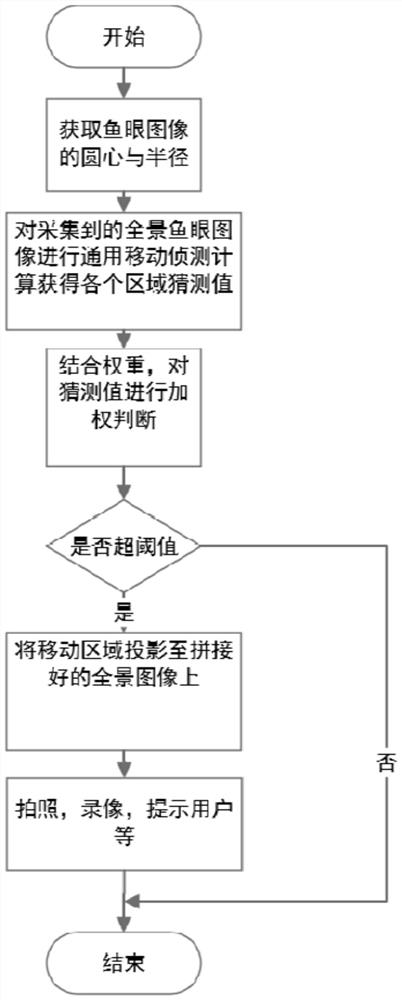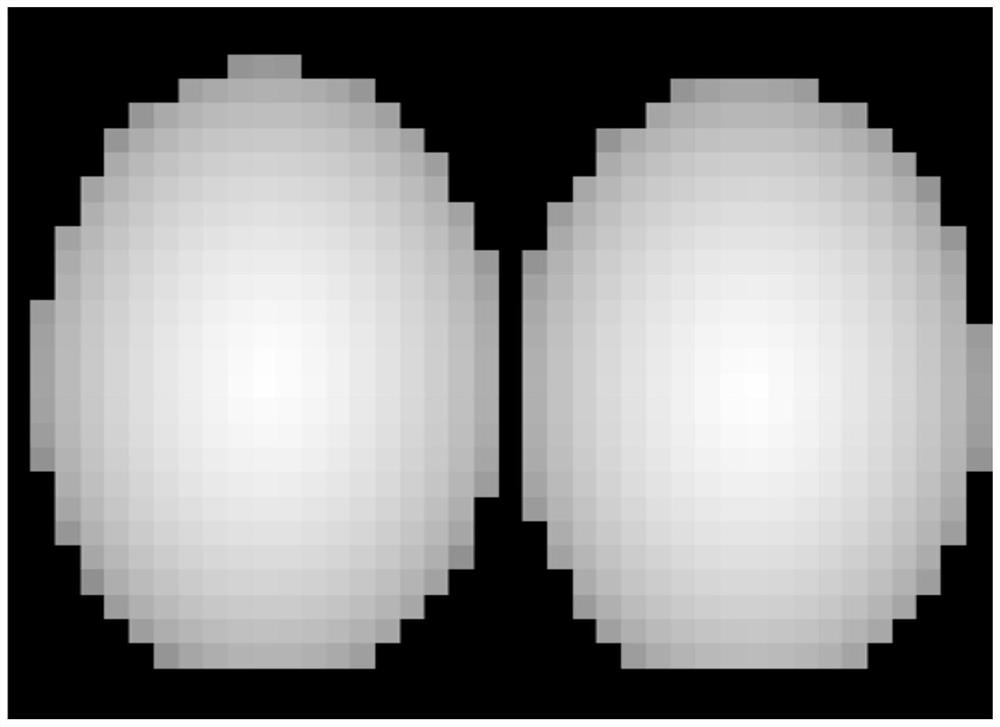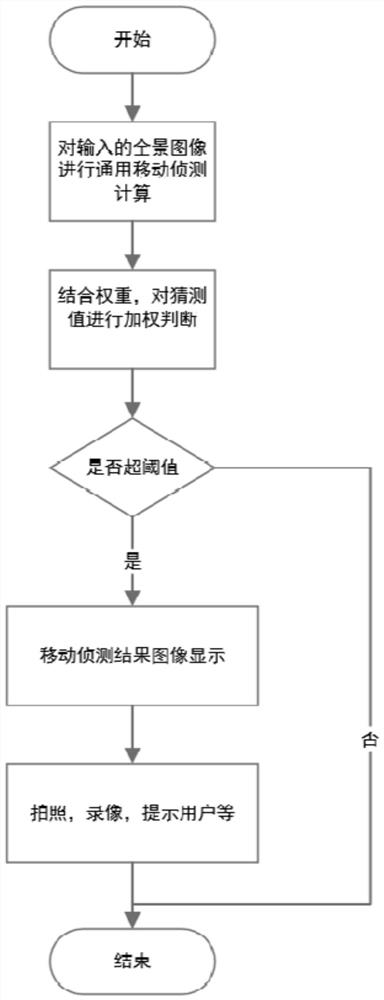A panoramic motion detection method and device
A motion detection and panorama technology, applied in the field of motion detection, can solve the problem of inaccurate motion detection, achieve accurate motion detection, overcome the inaccurate problem of motion detection, and achieve the effect of accurate motion detection
- Summary
- Abstract
- Description
- Claims
- Application Information
AI Technical Summary
Problems solved by technology
Method used
Image
Examples
Embodiment 1
[0059] like figure 1 , figure 2 As shown, the motion detection method includes steps when the input is double fisheye:
[0060] 1. Obtain the center and radius of the two fisheye images from the images captured by the dual fisheye panoramic camera;
[0061] 2. Compare and calculate the images collected by the panoramic camera, and get the guess value of whether the corresponding area moves;
[0062] 3. Combined with the pre-defined weights, the guessed values collected in the previous step are weighted;
[0063] 4. When the calculation result exceeds the threshold, it prompts that the panoramic camera is moving and passes on the moving area;
[0064] 5. Project the moving area into the spliced 2:1 panoramic image, and perform distortion correction on the area;
[0065] 6. Perform operations such as identification, video recording, photo taking, and prompting the user;
[0066] 7. The process ends.
Embodiment 2
[0068] Corresponding to the monitoring camera, the operation process includes:
[0069] 1. The motion detection algorithm first reads the pre-identified fisheye circle center and radius from the camera;
[0070] 2. Comparing and calculating the collected images to obtain the guess value of whether the corresponding area moves;
[0071] 3. According to the camera's compensation for the captured fisheye image, obtain the weighted value for judging whether to move;
[0072] 4. When the weighted value is greater than the threshold, it is considered that there is movement, and the camera is notified;
[0073] 5. The camera receives the incoming moving signal, maps the moving part to the 2:1 panoramic image stitched by the fisheye image, and frames and identifies the moving part;
[0074] 6. The camera takes pictures, records videos, prompts users and other operations;
[0075] 7. End.
Embodiment 3
[0077] like image 3 , Figure 4 As shown, the process of a panoramic camera whose input video is a 2:1 panoramic image includes:
[0078] 1. Comparing and calculating the input panoramic video to obtain the guess value of whether each area moves;
[0079] 2. Combine the weights of each area to obtain a judgment result of whether the overall panoramic video is moving. If there is movement, notify the camera and perform relevant operations;
[0080] 3. The camera receives the incoming mobile signal, performs operations such as frame selection, highlighting and identification of the moving part, takes pictures, records videos, and prompts the user;
[0081] 4. End.
PUM
 Login to View More
Login to View More Abstract
Description
Claims
Application Information
 Login to View More
Login to View More - R&D
- Intellectual Property
- Life Sciences
- Materials
- Tech Scout
- Unparalleled Data Quality
- Higher Quality Content
- 60% Fewer Hallucinations
Browse by: Latest US Patents, China's latest patents, Technical Efficacy Thesaurus, Application Domain, Technology Topic, Popular Technical Reports.
© 2025 PatSnap. All rights reserved.Legal|Privacy policy|Modern Slavery Act Transparency Statement|Sitemap|About US| Contact US: help@patsnap.com



